Vintage drum gear: Premier classics
'30s, '60s and '70s gear from the legendary British drum brand
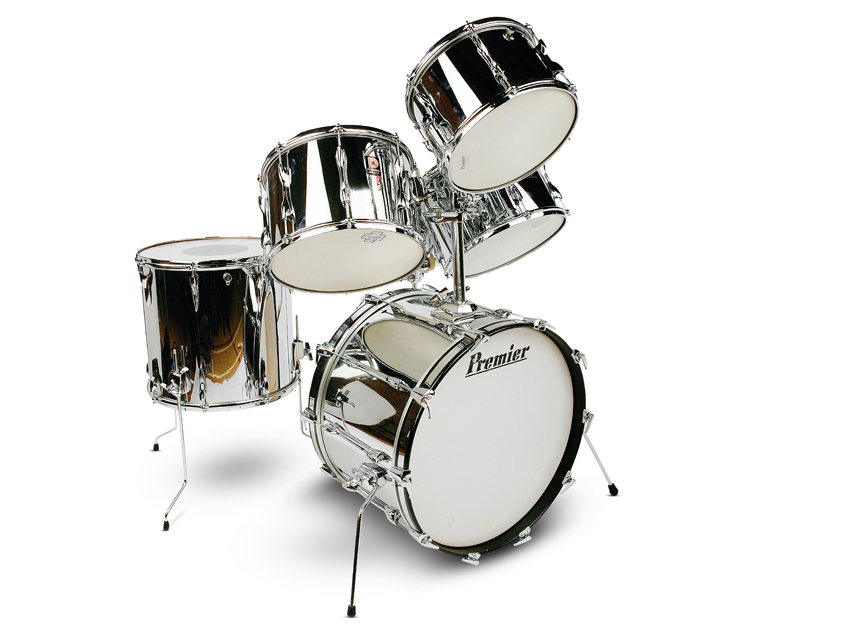
Premier Pro Kit
Each month Rhythm Magazine tracks-down and checks-out vintage gear in order to marvel at a bit of drum-making history.
Here we take a look at three classic phases in the 90 year history of legendary British drum manufacturer Premier…
First up, this splendid Premier chrome-clad kit was put up for sale at the 2009 National Drum Fair by Cris Thomas of Talkin’ Headz drum shop in Woburn Sands, Milton Keynes.
The kit has had just one very careful owner, Pete Obee, who bought it new from the Luton Music Centre around 1974. Pete says the kit is an Elite, which was Premier’s top pro line in the 1970s alongside the more famous Resonator.
The original set comprised the 22x14-inch bass drum with 13x9-inch and 14x10-inch rack toms and 16x16-inch floor tom. The 12x8-inch tom was added a year or two later, while the snare drum was bought earlier and is a 10-lug Hi-Fi from the 1960s.
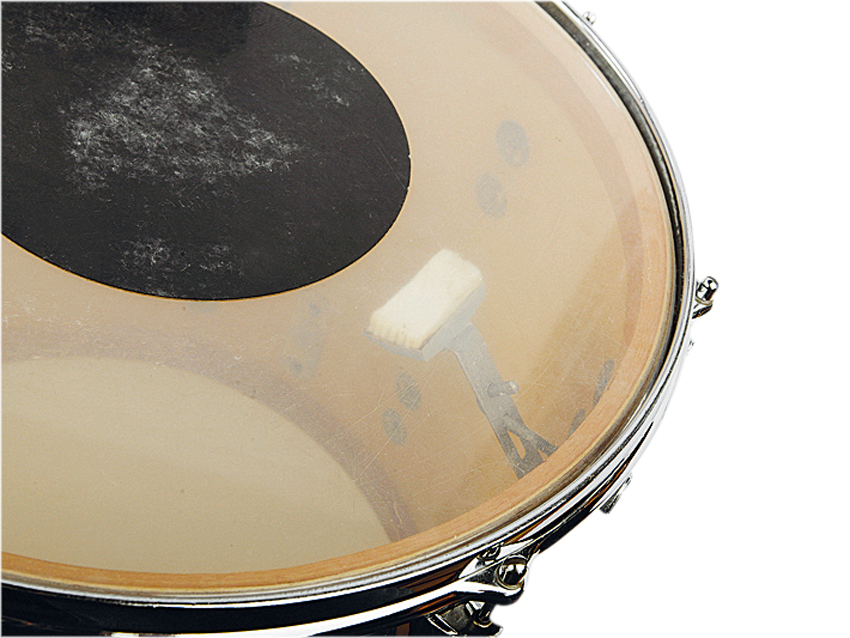
Premier Pro Kit
The kit’s stunning chrome cladding would have added an additional 10 percent to the original price, according to Tam Rankin. This finish appears in Premier’s 1978 leaflet brochure, although Pete’s kit was made several years earlier.
During the 1970s, other companies, including Pearl and Slingerland, also offered chrome-covered drums.
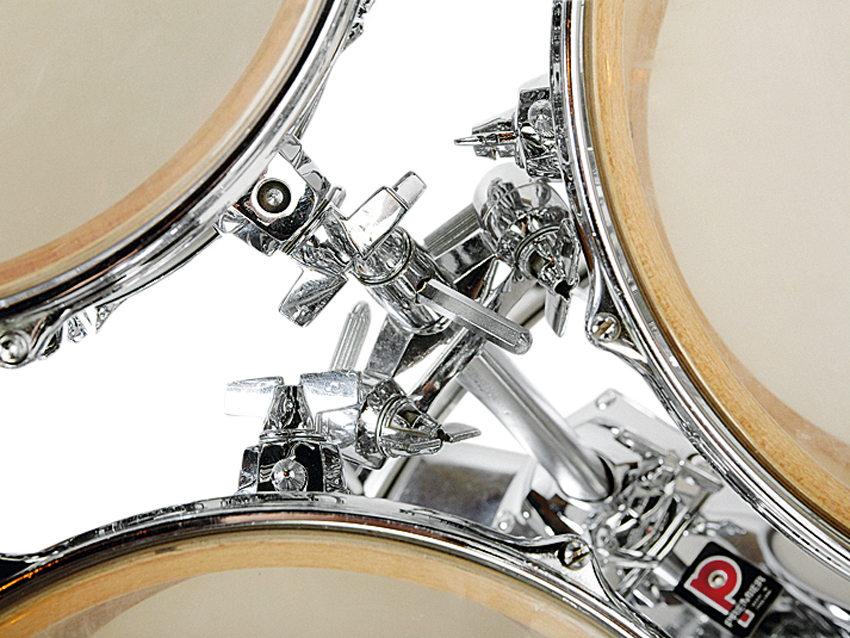
Premier Pro Kit
Multi-tom set-ups were another big feature of the 1970s and this led to some unusual tom mounts. Pete’s kit has the rarely-seen three-way model 393 Trilok holder.
Premier did a 394 four-way holder too, which was basically two double holders stuck onto the single bass drum post.
Pete Obee, who’s still gigging at the age of 70, played the kit during the ’70s and has kept it in mint condition ever since.
He remembers lending it to his son for a short while, but says he’s mostly stored the drums since the ’80s. He describes the drums as “sounding brilliant and very loud”.
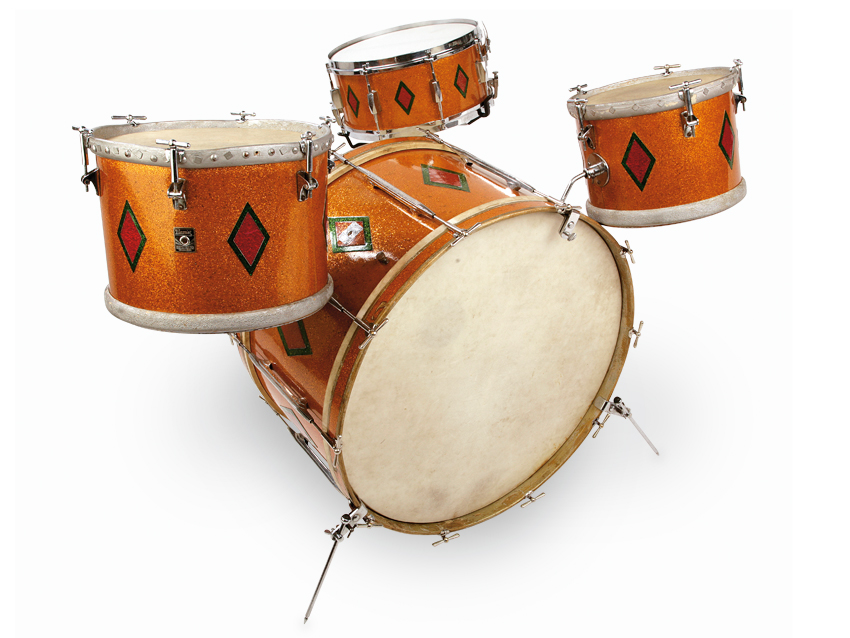
Premier kit in Sparkling Wonder finish
This 1930s Premier was made in London before the company moved to Leicester during WWII. It belongs to Dion Cochrane.
Dion says, “The kit was originally purchased new by a drummer called Percy Pratt who used it right up to the 1960s. I had a letter from his son which says his mum remembered waiting outside a drum shop in Southsea (Hampshire) - they lived near Goodwood.
“The kit originally had a console with skull blocks which I still have. Eventually his son played it in a rhythm and blues band in Birmingham. He put it away and I purchased it about 10 years ago.”
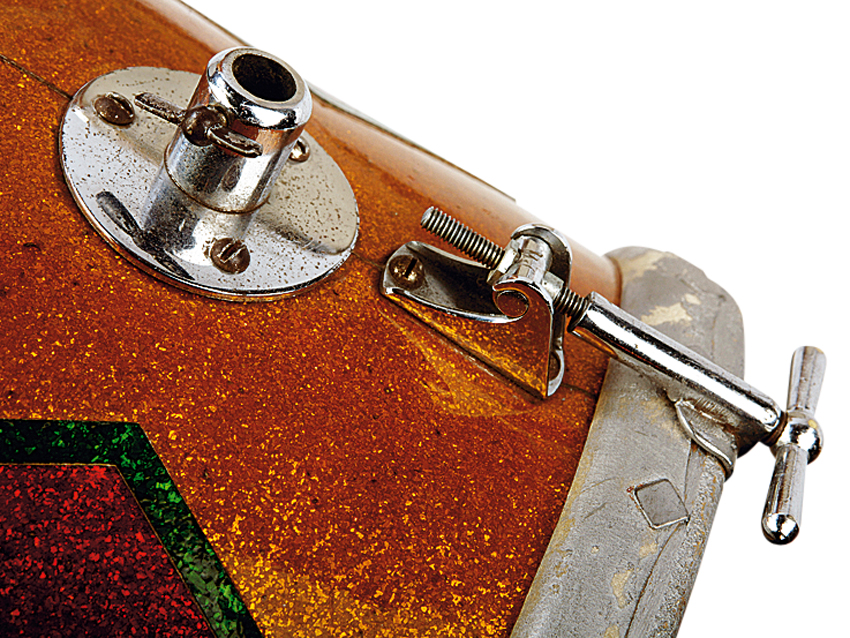
Premier kit in Sparkling Wonder finish
Sizes are 28x14-inch, with 12 and 14-inch single-headed toms and 14x6-inch snare. The 12-inch tom nests inside the 14-inch. The Ace bass drum has Premier’s original art deco full-length lugs, while the snare has the earlier ‘X’ box-type lugs, copied from Leedy.
The kit is a mixture, probably bought piecemeal over a year or two, but it all matches.
“It’s basically fudged together,” Dion explains, “which is the sort of thing drummers did back then, so I’ve kept it that way.
“The most unusual thing is the tensioning of the toms. The calf heads are tacked to the rims rather like a Chinese tom, but then they’re tensioned without using a flesh hoop. I believe Premier only made these for a year or so and then they went over to normal metal rims.
“The shells are three-ply with reinforcing rings and there’s silver paint inside. The clip-on spurs are Beverleys, they were in the box with all the bits he had. I got some cymbals with it as well.”
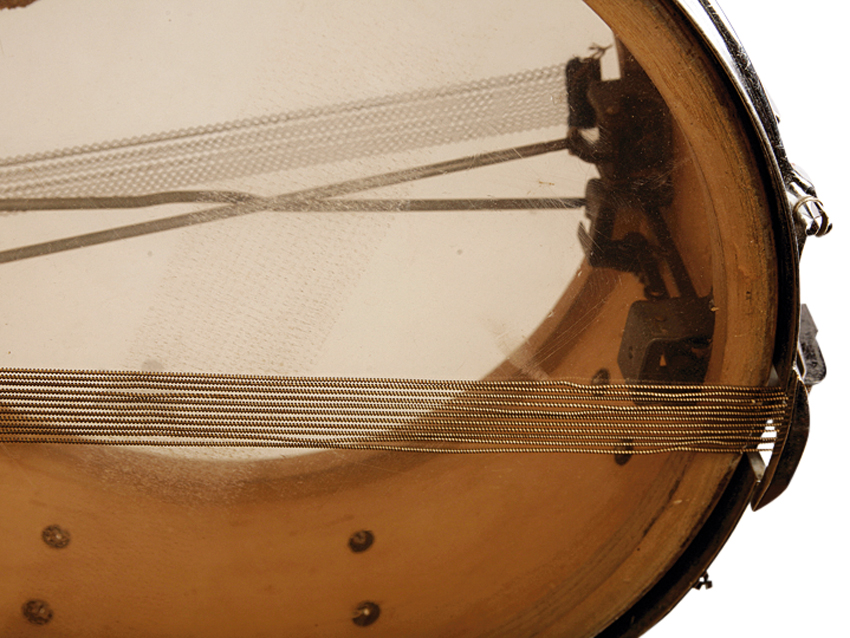
Premier kit in Sparkling Wonder finish
The kit looks splendid with its ‘full dress’ sparkling Wonder Finish which has Emerald (green) Glitter and Sun (red) Glitter diamonds on a Gold Glitter background. Premier also offered Crystal (silver) Glitter and Pearlex (WMP) finishes.
Dion concludes, “I have played the kit quite a lot, but not at the moment. The toms sound beautiful, they’re easy to tune and the calf heads have a really good tone. I stopped using it though because I thought it’s too rare and valuable to leave in the car.”
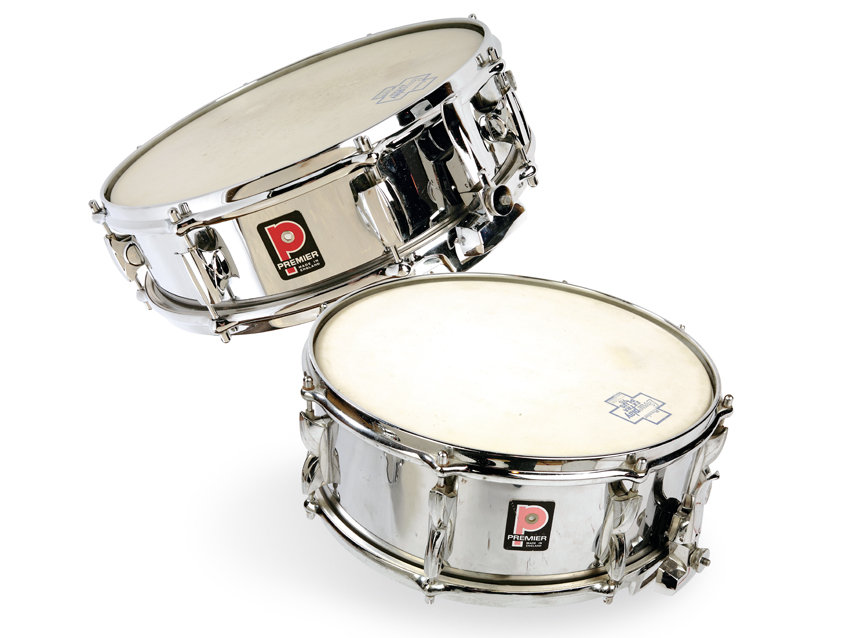
Premier Chrome 2000 snares
When British rock took off in the 1960s it was American drums that scored heavily. Previously denied to the Brits, once Ludwigs were imported to the UK, British drummers would sell their grannies to get one.
But British Premier prospered too - the boom was so massive there was plenty to go round.
In retrospect, it’s evident Premier always made superbly crafted drums, as shown by this pair of 2000 series snares. The 2000 was Premier’s top banana from the late 1960s and was available in three sizes - 14x4-inch, 14x5½-inch and 14x6½-inch - in wood or metal. Plus a 14x12-inch concert model.
As rock music got louder, most drummers - still un-miked - changed from wood to metal snares to compete. Thus the 5½-inch metal 2000 became Premier’s flagship snare and today still has many fans with its single-piece spun metal shell.
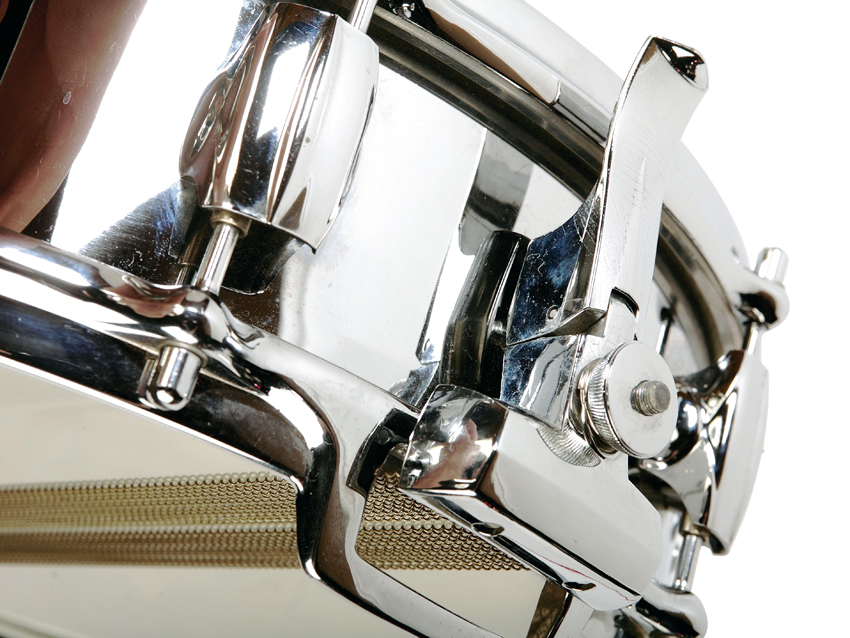
Premier Chrome 2000 snares
The 5½-inch metal was first seen in 1966, had its major launch as star of the 1968 catalogue and was produced right up to this millennium. According to Premier expert Tam Rankin, the first 2000s may have had brass shells like the Royal Ace drums they replaced. They then had aluminium shells, and finally steel.
The love it or hate it part is the parallel action snare mechanism. It is a fabulous piece of engineering with its ‘Flobeam’ snare bar support and snare brackets detached from the shell to allow full resonance, all operated by the elongated and pleasingly contoured throw-off lever.
The problem, shared with other parallel actions, is that you have to get the twin 12-strand snares exactly parallel to the bottom head or the rattles and buzzes will drive you mad.
The snares came factory-set, and woe betide you once they got out of kilter - restoring the drum to a playable state was the undoing of many a poor drummer.
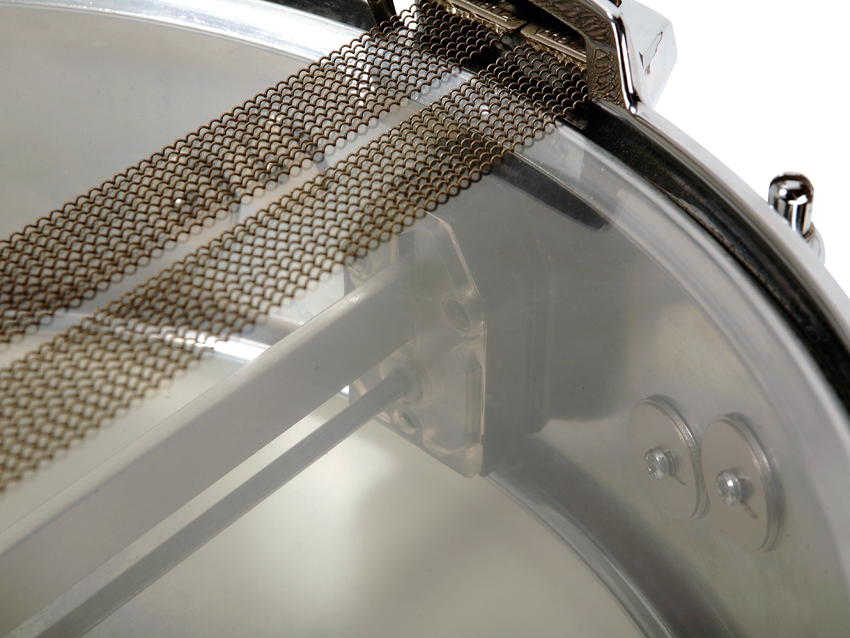
Premier Chrome 2000 snares
The absolutely mint 14x4-inch model 2011 belongs to West Yorkshire drummer Roy Tennett and the more familiar 14x5½-inch model 2000 is Richard Lanchester’s from Chichester.
Both are eight-lug drums with Premier’s low profile, sexily rounded, die-moulded hoops. The tension bolts still have European style slot-heads. The shallow drum has eye-catching double-ended, off-set lugs while the 5½-inch has the more familiar flush-braced lugs.
Premier had just changed over to this sharp-ended design from the earlier, more rounded version.
Roy still has his original receipt: “It’s from Kitchen’s music shop in Leeds for £34 and five old pence,” he says. “I played it up till the 1980s. I’ve always kept it in a cloth bag my mother made, inside the hard cases. And I take it apart every year to clean it up and oil the lugs.”
Vintage Gear continues each month in Rhythm Magazine.

Geoff Nicholls is a musician, journalist, author and lecturer based in London. He co-wrote, co-presented and played drums on both series of ‘Rockschool’ for BBC2 in the 1980s. Before that he was a member of original bands signed by Decca, RCA, EMI and more. ‘Rockschool’ led to a parallel career writing articles for many publications, from the Guardian to Mojo, but most notably Rhythm magazine, for which he was the longest serving and most diverse contributor.